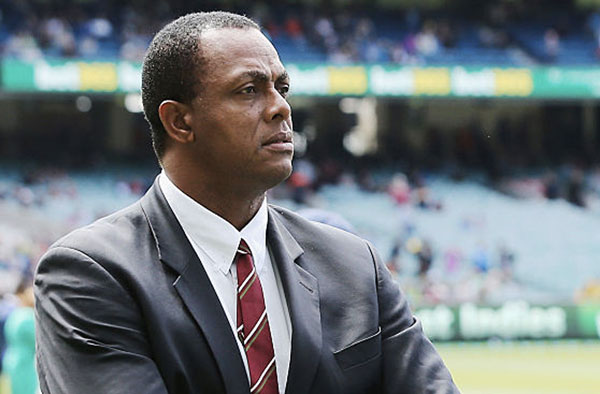Cricket, often referred to as a game of glorious uncertainties, possesses a beauty that lies in its nuances. Among the many skills that make cricket captivating, the art of swing bowling holds a special place. This article aims to traverse through the annals of cricket history, celebrating the mastery of the best swing bowlers of all time.
Understanding Swing Bowling:
Before delving into the profiles of these swing maestros, it's crucial to grasp the essence of swing bowling. The phenomenon of swing occurs when a bowler manipulates the orientation of the ball to exploit the aerodynamic principles, causing it to deviate in the air. This subtle but impactful skill can be classified into two types: conventional swing and reverse swing.
1. Sir Richard Hadlee (New Zealand):
Sir Richard Hadlee, the New Zealand cricketing legend, graced the game with his mesmerizing swing bowling during the 1970s and 1980s. Renowned for his accuracy and ability to generate late movement, Hadlee's mastery swung countless matches in New Zealand's favor.
2. Wasim Akram (Pakistan):
Wasim Akram, often hailed as the "Sultan of Swing," redefined fast bowling with his prodigious ability to swing the ball both ways. A left-arm genius, Akram's lethal swing variations made him a nightmare for batsmen across the globe.
3. James Anderson (England):
In the contemporary era, James Anderson stands as a testament to the enduring art of swing bowling. With a classic, repeatable action, Anderson has mastered the skill of conventional swing, tormenting batsmen with his ability to make the ball talk in the air.
4. Waqar Younis (Pakistan):
Waqar Younis, in tandem with Wasim Akram, formed one of the most fearsome swing bowling partnerships in cricket history. Nicknamed the "Burewala Express," Waqar's in swinging Yorkers and sharp outswingers left an indelible mark on the game.
5. Glenn McGrath (Australia):
While primarily known for his impeccable line and length, Glenn McGrath possessed the subtle art of swing bowling. His ability to extract movement off the seam and occasional late swing made him a complete and devastating fast bowler.
6. Sir Ian Botham (England):
Sir Ian Botham, an iconic figure in English cricket, showcased his versatility as a swing bowler in addition to his exceptional all-round abilities. Botham's swinging deliveries complemented his aggressive style, making him a game-changer for England.
7. Courtney Walsh (West Indies):
The West Indies, known for its fearsome pace battery, saw swing excellence in Courtney Walsh. His ability to generate prodigious late outswing troubled batsmen and Walsh became West Indies' leading wicket-taker with his crafty swing bowling.
8. Dale Steyn (South Africa):
Dale Steyn, one of the fastest bowlers of his generation, possesses a lethal outswinger that adds a swing dimension to his express pace. Steyn's ability to combine speed with swing made him a modern great in the realm of fast bowling.
9. Imran Khan (Pakistan):
Imran Khan, a cricketing statesman and legendary all-rounder, brought finesse to swing bowling. His controlled seam position and ability to move the ball both ways made him a formidable force, particularly during Pakistan's cricketing renaissance.
10. Fred Trueman (England):
Often regarded as one of England's finest fast bowlers, Fred Trueman's mastery of swing bowling was exemplary. His swing, often described as a "late in-swing," confounded batsmen and secured his place among the greats of the game.
Evolution of Reverse Swing:
As the game evolved, so did the art of swing bowling. The advent of reverse swing brought a new dimension to the craft, allowing bowlers to exploit the deterioration of the ball and produce wicked movement even on dry, abrasive surfaces.
1. Wasim Akram (Pakistan):Wasim Akram's inclusion is reiterated in the context of reverse swing. His ability to make the ball swing both ways, even with an aging ball, was revolutionary and laid the groundwork for the prominence of reverse swing in modern cricket.
2. Waqar Younis (Pakistan): Waqar Younis, Wasim Akram's partner in crime, was equally adept at reverse swing. His mastery of the art, combined with his express pace, formed a deadly combination that dismantled oppositions with surgical precision.
3. Dale Steyn (South Africa): Dale Steyn's versatility extends to reverse swing, where his ability to generate late movement at high speeds made him a force to be reckoned with even on unresponsive tracks.
4. James Anderson (England): James Anderson's adaptability is showcased in his proficiency in reverse swing. His ability to extract movement even in unfriendly conditions has been a vital asset for England.
Conclusion:
In the grand tapestry of cricket, swing bowling emerges as a delicate yet potent thread that weaves together memorable moments, shifting the balance of power within the game. The aforementioned swing maestros, each unique in their approach, have not only left an indelible mark on the cricketing landscape but have also inspired generations of bowlers to embrace and refine this captivating art.
As the game continues to evolve, the legacy of swing bowling endures, carried forward by contemporary greats and aspiring young pacers. In celebrating the best swing bowlers of all time, we pay homage to the artists who, with a leather ball in hand, created poetry in motion on the lush green stages of cricketing history.



















0 Comments